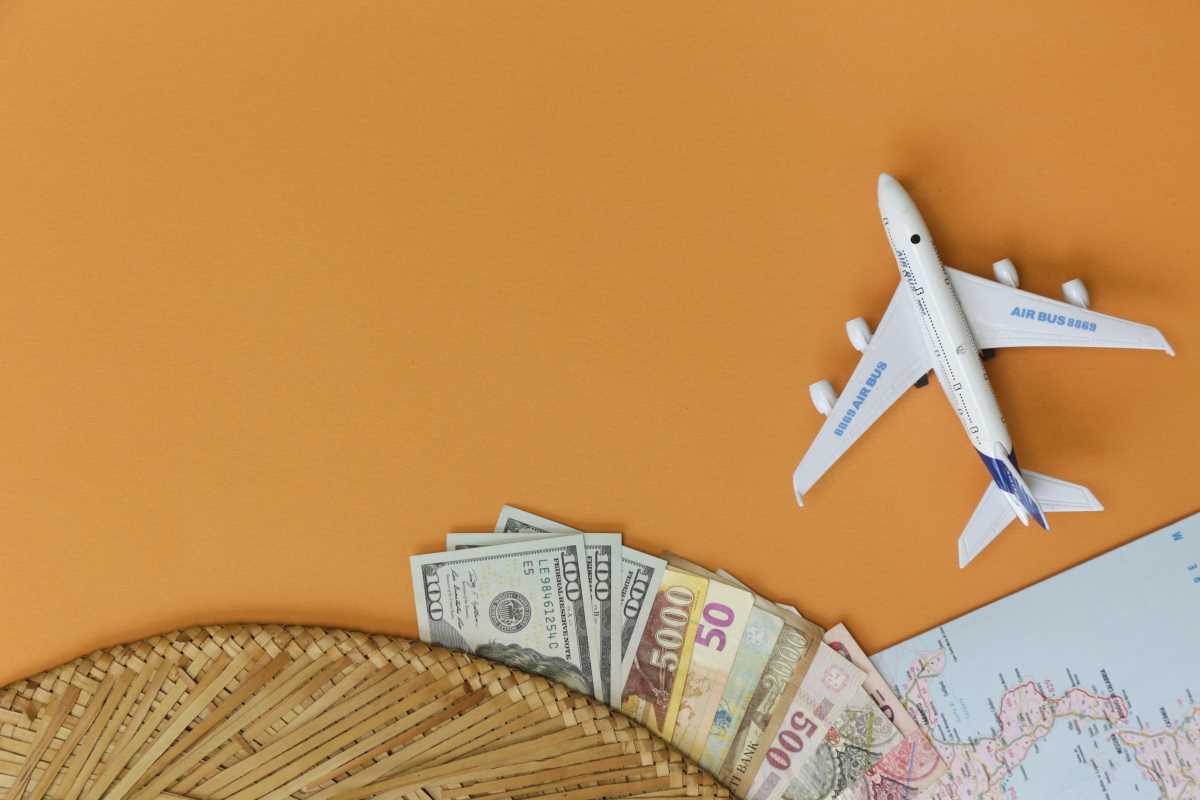Every memorable trip starts with more than just exciting plans or a list of must-see spots. Careful, thoughtful preparation of your finances lays the groundwork for smooth adventures. By planning ahead for changes in exchange rates, possible surprise charges, and the need to adjust your spending as you go, you set yourself up for less stress and more enjoyment. This approach allows you to make the most of every experience, whether you’re sipping coffee in a quiet corner café or enjoying a spontaneous upgrade. Being mindful with money on the road brings peace of mind and helps each journey feel both rewarding and wise.
Redefining Traveler Priorities Through Smart Insights
Traditional budget advice emphasizes cutting meals or sharing rooms. Today’s landscape calls for a deeper look at portfolio-like diversification of travel funds. This means considering multiple accounts, tiered spending plans, and real-time rate alerts. These approaches keep your cash working in your favor rather than sitting idle in an overlooked account.
Spend time tracking variable costs you usually ignore: ATM fees, dynamic pricing in ride services, or hotel currency conversion charges. That quick coffee run can become a significant line item across a week-long trip. By shining a light on these blind spots, you gather intelligence that lays a foundation for confident choices on the road.
Fresh Perspectives That Undermine Common Money Myths
- Myth: All-in-one cards offer the best coverage. Reality: Layered card use can optimize perks across multiple currencies and fee structures. Keep one card for emergency withdrawals, another for rewards, and a third for everyday spending to spread risk and maximize per-transaction value.
- Myth: Prepaid currency cards protect you from rate swings. In truth, loading in advance locks in today’s rate but prevents you from benefiting when markets move in your favor. Use a hybrid strategy of spot purchases plus a small prepaid cushion to balance control with flexibility.
Concrete Paths to Smarter Spending
- Cash Bucket Method
- Purpose: Allocate dedicated funds for lodging, dining, transport, activities, and incidentals.
- Step-by-Step Usage:
- Identify five spending categories before departure.
- Withdraw estimated amounts for each.
- Store cash in separate zippered pouches labeled by category.
- Cost/Metric/Availability: ATM fees average $3–$5 per withdrawal; limit daily withdrawals to reduce fees.
- Insider Tip: Keep a slim stash of local coins in a hidden pocket to avoid backtracking for small change.
- Real-Time Exchange Tracker
- Purpose: Monitor currency rates on the go.
- Step-by-Step Usage:
- Install a currency rate-tracking app.
- Set alerts for target buy/sell thresholds.
- Execute conversions when thresholds are reached.
- Cost/Metric/Availability: Free apps available; premium plans (~$5/month) offer instant notifications.
- Insider Tip: Enable offline mode to access last-updated rates when you're in low-signal areas.
- Dual-Account System
- Purpose: Separate emergency reserves from daily spending.
- Step-by-Step Usage:
- Open a fee-free online foreign currency account.
- Fund it with the equivalent of three days' worth of emergency expenses.
- Use your primary account for daily card purchases only.
- Cost/Metric/Availability: No monthly fees; average transfer time is 1–2 business days.
- Insider Tip: Store a second emergency card in a different compartment or bag to reduce theft risk.
- Tiered Cash-Back Routing
- Purpose: Maximize reward returns using the right card for each expense category.
- Step-by-Step Usage:
- List your top spending categories (e.g., dining, transport).
- Match each category with a credit card offering high cash-back rates.
- Pay accordingly at checkout to optimize returns.
- Cost/Metric/Availability: Cash-back typically ranges from 1% to 5%.
- Insider Tip: Maintain a note of current reward tiers and point multipliers to avoid confusion during purchases.
- Dynamic Budget Checklist
- Purpose: Adapt and optimize your spending throughout the trip.
- Step-by-Step Usage:
- Set weekly budget goals for each category.
- Track daily expenses every evening.
- Reallocate leftover funds to upcoming splurges or savings.
- Cost/Metric/Availability: Free spreadsheet templates or offline-friendly apps.
- Insider Tip: Use location-based reminders to receive alerts when you hit spending limits in specific areas.
Advanced Tools and Tactics for Every Journey
- Multi-Bank Syncing
- Purpose: View all financial accounts in one streamlined dashboard.
- Steps:
- Choose a secure account aggregator (e.g., Mint, YNAB, or Revolut).
- Link your checking, savings, credit cards, and travel wallets.
- Review daily financial snapshots to track balances and detect anomalies.
- Cost/Metric/Availability: Free tier usually supports up to 5 connections; data is encrypted end-to-end.
- Insider Tip: Enable biometric login for faster and safer access while traveling.
- Peer-to-Peer Currency Exchange Networks
- Purpose: Save on foreign exchange fees by connecting with fellow travelers.
- Steps:
- Register on a vetted P2P currency exchange platform (e.g., WeSwap, LocalBitcoin-style services).
- Post your desired conversion and cash availability.
- Meet at a public location to complete the exchange.
- Cost/Metric/Availability: Fees average ~1% of transaction; available in major urban hubs.
- Insider Tip: Check participant ratings, and always meet during the day in public places like cafes or coworking spaces.
- Geo-Fenced Spending Alerts
- Purpose: Prevent overdrafts and monitor spending in sensitive areas.
- Steps:
- Define custom spending limits for specific regions (e.g., per city or country).
- Activate location tracking in your banking app.
- Get instant alerts if your spending nears or exceeds the set threshold.
- Cost/Metric/Availability: Free in most modern banking apps.
- Insider Tip: Set alerts specifically for airports and hotels, where card fraud risk is higher.
- Short-Term Micro-Investments
- Purpose: Earn passive returns on a small portion of your daily travel budget.
- Steps:
- Set aside ~5% of your daily budget for investment.
- Invest via micro platforms in fractional ETFs or bond funds (e.g., Acorns, Stash).
- Review performance weekly to ensure alignment with your cash flow.
- Cost/Metric/Availability: Start from $1; transaction fees around $0.50 per trade.
- Insider Tip: Focus on low-volatility, dividend-paying assets to reduce risk during your trip.
- Automated Rounding-Up Savings
- Purpose: Passively grow a savings buffer with every purchase.
- Steps:
- Connect your debit or credit card to a rounding-up service (e.g., Qapital, Chime, or built-in bank features).
- Choose a rule—round up to the nearest dollar or add a fixed amount per transaction.
- Let the spare change accumulate into a separate savings pot.
- Cost/Metric/Availability: ~$1/month for most services; some banks offer this feature for free.
- Insider Tip: Look for sign-up promos that match your first 30 days of savings for a fast head start.
Unlock New Levels of Budget Flexibility
When travelers aim for quick responses to changing rates, they rethink core financial planning choices. Divide funds across multiple instruments—prepaid cards, credit lines, currency accounts—to keep fallback options available. This layered control avoids a single point of failure, so you do not face a scenario where you must accept unfavorable rates.
Combine this approach with periodic reviews of your performance. Conduct a quick weekly check of your spending and fund distribution to identify opportunities to rebalance. This simple habit prevents small oversights from growing into budget wreckers by the end of your trip.
Adding Unexpected Expense Safeguards
- Emergency Travel Credit
- Purpose: Cover unforeseen costs like medical emergencies or last-minute cancellations.
- Steps:
- Choose a credit card or travel account that includes an emergency credit line.
- Reserve part of your limit strictly for emergencies—don’t dip into it for routine expenses.
- Set a repayment plan in advance to avoid accruing high interest.
- Cost/Metric/Availability: 12–18% APR typical; many cards waive annual fees for the first year.
- Insider Tip: Notify your issuer of your travel dates to avoid declines from foreign transaction flags.
- Local Micro-Insurance
- Purpose: Protect against location-specific risks such as theft, accidents, or urgent care.
- Steps:
- Research micro-insurance providers operating in your destination.
- Buy a policy with a daily premium suited to your trip duration.
- Keep digital proof of coverage on your phone or cloud storage.
- Cost/Metric/Availability: Starting from $2/day; coverage limits vary by provider and region.
- Insider Tip: Bundle with flight or baggage insurance to cut costs and simplify claim processing.
- Peer Backup Fund
- Purpose: Create a shared financial safety net with trusted companions.
- Steps:
- Agree on a maximum shared reserve (e.g., $200 total).
- Divide contributions evenly among group members.
- Store funds in a joint-access digital wallet (like Revolut or Wise).
- Cost/Metric/Availability: Typically ~0.5% transfer fee, depending on the platform.
- Insider Tip: Use a joint password manager (e.g., Bitwarden or 1Password) to share access securely without exposing full login details.
- Proactive Fee Audit
- Purpose: Spot and recover unexpected charges after the trip ends.
- Steps:
- Collect all receipts, bank, and credit card statements.
- Compare each charge with what was quoted or expected.
- File disputes with your card issuer within 60 days of the transaction.
- Cost/Metric/Availability: Most banks resolve disputes at no extra cost.
- Insider Tip: Look out for hidden auto-renewals or subscriptions started while abroad.
- Alert-Based Refund Claims
- Purpose: Reclaim money when prices drop after booking.
- Steps:
- Set up price-drop alerts (e.g., via Hopper, Skyscanner, or Google Flights).
- Monitor for fare or rate reductions before departure.
- Request a credit or refund if a lower rate appears.
- Cost/Metric/Availability: Depends on provider policy; some allow partial refunds within a specific window.
- Insider Tip: Use automated chatbots from airlines or booking platforms to file claims immediately and skip the queue.
By making these methods routine, you free up time for exploration rather than tracking expenses. Careful money management and targeted tools help you travel confidently and gain more from every journey.
 (Image via
(Image via





